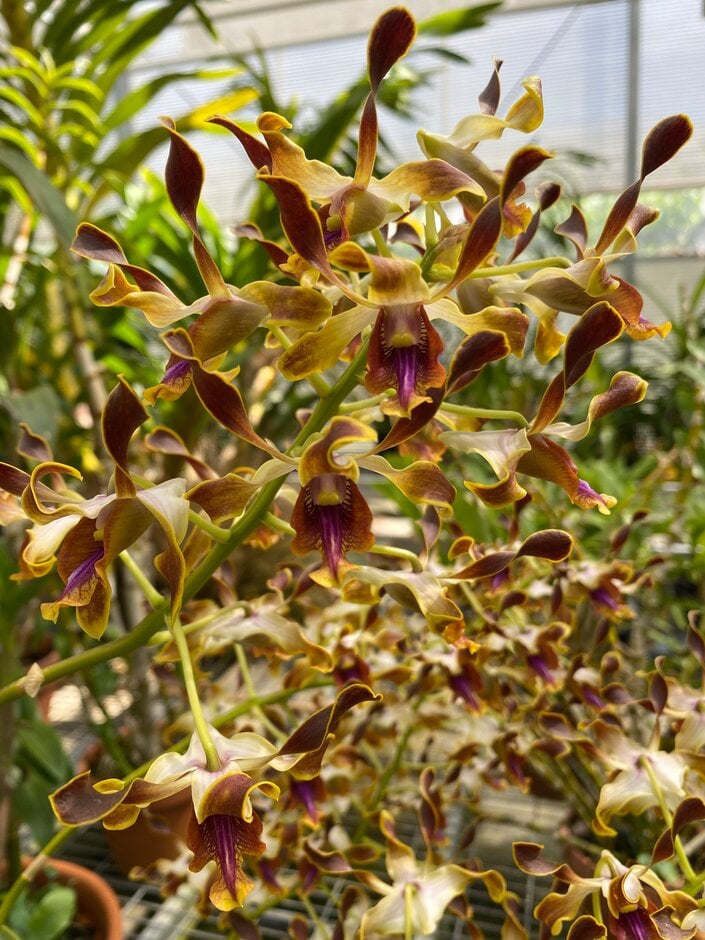Dendrobium antennatum × helix 'Pomio Brown'
A medium to large-sized, evergreen orchid with long, upright, cane-like stems (pseudobulbs), up to 100cm tall. Bright green leaves are arranged along the cane nodes, stiff and up to 15cm long and 3-5cm wide. The flowering stems measuring up to 50cm emerge from the upper nodes of mature pseudobulbs and carry 3 to 20 flowers. The flowers are waxy and long-lasting, approximately 5cm across. The petals are yellow or brown, often spirally twisted and pointing upwards - resembling an antelope

Size
Ultimate height
0.5–1 metresTime to ultimate height
5–10 yearsUltimate spread
0.5–1 metresGrowing conditions
Moisture
Well–drainedpH
NeutralColour & scent
| Stem | Flower | Foliage | Fruit | |
| Spring | Green Yellow | Brown Yellow Purple | Green | |
|---|---|---|---|---|
| Summer | Green Yellow | Brown Yellow Purple | Green | |
| Autumn | Green Yellow | Brown Yellow Purple | Green | |
| Winter | Green Yellow | Green |
Position
- Full sun
- Partial shade
Aspect
East–facing or South–facing or West–facing
Exposure
Exposed or Sheltered Hardiness
H1ABotanical details
- Native to GB / Ireland
- No
- Foliage
- Evergreen
- Habit
- Clump forming, Columnar upright
How to grow
Cultivation
Plants are best grown in a pot in an epiphytic, medium grade, bark-based potting mix with addition of sustainably sourced perlite, moss, or coir. As with many orchids, they grow best when the roots are slightly restricted. Therefore, avoid over-potting or frequent root disturbance. It is a warm-growing orchid and the temperatures should not drop below 16°C. Provide very bright light conditions and 80% humidity throughout the year. See indoor orchid cultivation
Propagation
Propagation by seed is only possible in controlled laboratory environment. Mature plants may be divided when the plant overgrows the pot. Sideshoots (keiki) may develop on older canes - remove and pot them into sustainably farmed sphagnum moss when the new roots are at least 2cm long.
Suggested planting locations and garden types
- Houseplants
- Conservatory and greenhouse
Pruning
No pruning required. Remove spent flowers as necessary, but do not cut the whole cane unless completely shrivelled. Oldest canes may be removed as long as there are at least three, younger, thick, leaf-bearing canes on the plant.
Pests
May be susceptible to scale insects, aphids, mealybugs and red spider mite
Diseases
Generally disease-free
Get involved
The Royal Horticultural Society is the UK’s leading gardening charity. We aim to enrich everyone’s life through plants, and make the UK a greener and more beautiful place.